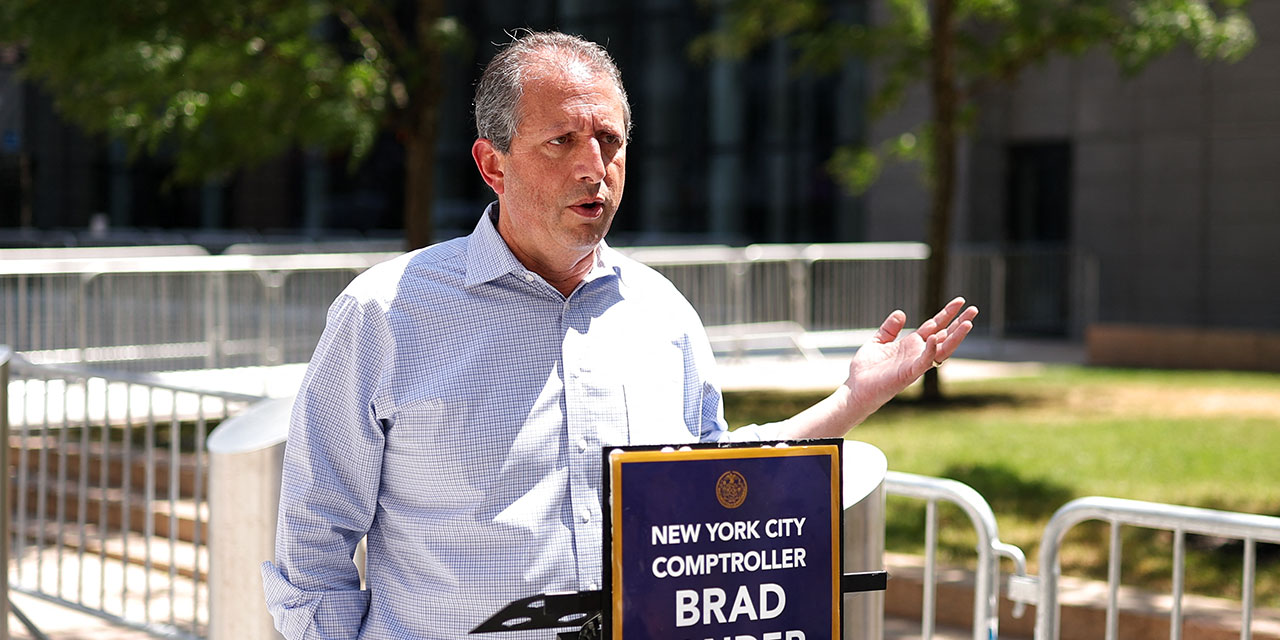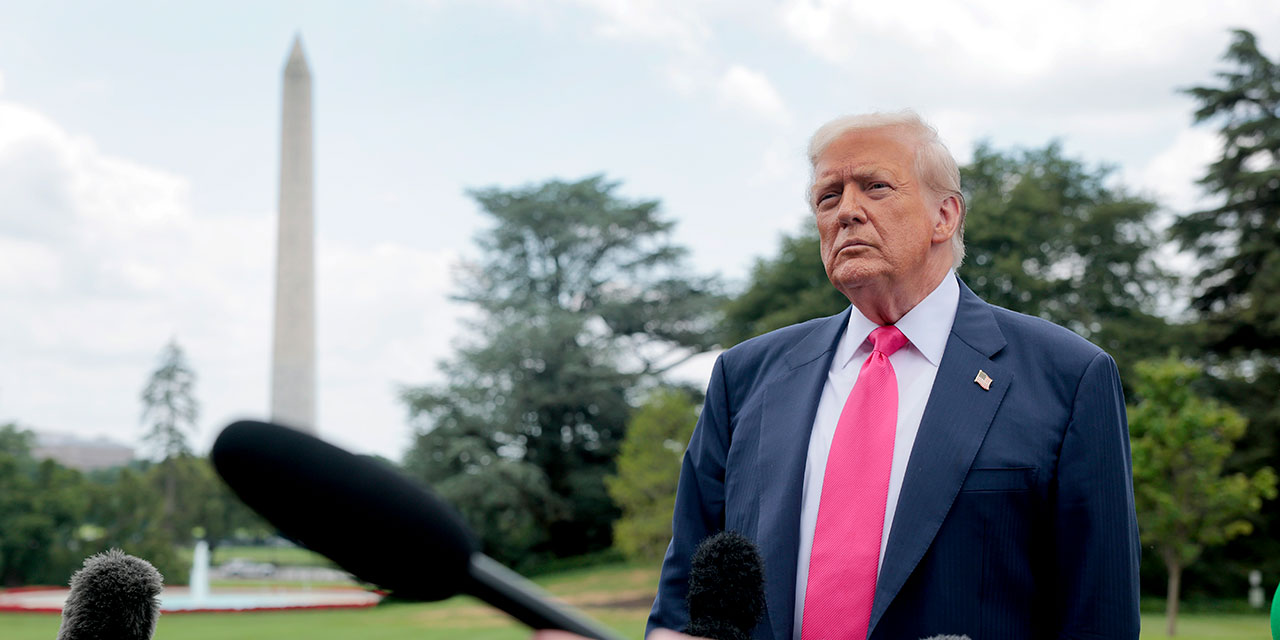Donald Trump’s running mate, Senator J. D. Vance of Ohio, maintains that a weaker dollar is necessary for creating more manufacturing jobs. Additionally, in April, former U.S. Trade Representative Robert Lighthizer and other Trump advisers floated a proposal to “devalue” the dollar, arguing that a cheaper dollar would boost U.S. exports and reduce the trade deficit.
A dollar devaluation would be a radical change in U.S. exchange-rate policy, which, for decades, has been to let the value “float” and be determined by market actors in foreign-exchange markets. It’s far from clear whether a new Trump administration would actually pursue devaluation once in office, but with both the Republican and Democratic Parties drifting toward protectionism in recent years, it’s worth exploring the tradeoffs.
Finally, a reason to check your email.
Sign up for our free newsletter today.
The U.S. dollar has often been considered “strong” since it became the world’s reserve currency after World War II, but the Fed’s steep interest-rate hikes in 2022 and 2023 have caused its value to surge over the last two years. Higher rate hikes have led to higher yields on dollar-denominated bonds. Since investors need dollars to purchase these bonds, the dollar’s value has greatly appreciated. A strong greenback is a double-edged sword. On the one hand, it makes imported goods cheaper and attracts foreign investment. On the other, it makes producing goods domestically more expensive relative to other places in the world where raw materials and labor cost less.
A dollar devaluation might temporarily boost exports, but it would do little to help U.S. manufacturers beyond the short run. Moreover, it would almost certainly lead to either high inflation, international backlash, or both.
To start, it’s important to distinguish between the nominal exchange rate (the price of a foreign currency in terms of the domestic currency) and the real exchange rate (the nominal rate adjusted by the price level in each country). Though the nominal exchange rate matters for a country’s trade surplus or deficit in the near term, the real exchange rate is what matters over the long haul.
Monetary policy can always affect the nominal exchange rate, but it only affects the real exchange rate in the short term. When a country’s central bank aims to reduce the value of its currency relative to another, it buys the foreign currency and sells its own. This raises the demand for and value of foreign currency, while expanding the supply and lowering the value of the local currency. To weaken the dollar substantially, the Fed would need to create many new dollars.
All else held equal, this will spur inflation, something Americans have little appetite for. Further, while the increase in the supply of dollars would reduce the nominal value of the dollar, it would not permanently affect the real exchange rate, so the policy would do little to help domestic producers.
Another strategy that Lighthizer is considering is to threaten other countries with tariffs unless they pursue policies aimed at appreciating their respective currencies. As economist Noah Smith observes, some precedent exists for this. In 1985, the U.S. negotiated a deal called the Plaza Accord with several European countries and Japan to weaken the dollar, which, like today, was very strong. Unfortunately, the United States’s trade deficit is about twice as large in real terms as it was in the 1980s, and China, which runs massive trade surpluses against the U.S., seems unlikely to agree to a Plaza Accord-like deal.
The tariff threat strategy is also risky. Since 2018, the U.S. has been fighting a trade war with China, as each country has imposed several rounds of tariffs against the other. If America levies tariffs against countries for failing to appreciate their own currencies, it should expect further retaliation. A recent Tax Foundation study found that tariffs from the Trump and Biden administrations have amounted to a $625 annual tax on Americans and have cost the U.S. the equivalent of 142,000 jobs. A new wave of tariffs would add to this pain.
Finally, tariffs strengthen the dollar, which would undermine the goal of boosting exports. Since a tariff makes imported goods more expensive, it raises the demand for domestic workers to produce goods. Assuming the economy is at full employment, this excess demand for workers would lead to excessive total spending and inflation. To prevent any inflation, the Fed would normally raise its target interest rate. With interest rates rising throughout the economy, investors will buy up more dollar-denominated bonds because those bonds will now earn more interest. This raises the demand for dollars and pushes the value of those dollars up.
Devaluing the dollar, either through foreign-exchange interventions or the threat of tariffs, comes with many risks and few upsides. Other options are available for producing more jobs at home and reducing the trade deficit that don’t entail such tradeoffs.
When a country runs a trade deficit, it consumes more than it saves, so it needs to borrow the difference. By the same token, a country running a trade surplus saves more than it consumes. For a clear example, consider again the U.S.’s trade deficit with China. China produces more than it sells domestically, so it sells many goods to the U.S. With dollar-denominated profits from the sale of those goods, the Chinese can invest in dollar-denominated bonds. This is why a country’s trade surplus is equal to its level of saving, minus its level of investment. A trade surplus means that a country saves more than it invests; a trade deficit means that it invests more than its saves.
Therefore, if U.S. policymakers want to reduce the trade deficit, they should pursue greater fiscal discipline. Another option for reform would be to liberalize services exports. Though many people think of trade in terms of physical goods, the U.S. has a comparative advantage in producing services, ranging from information technology to finance to health care. My Mercatus Center colleague Christine McDaniel has noted that many countries restrict cross-border sales of services and suggests that the U.S. should work with its key economic partners in removing these barriers.
J. D. Vance and Robert Lighthizer reasonably want a more productive American economy with good-paying jobs. Rather than resorting to dollar devaluation or other protectionist measures, they should work on structural reforms, which would make the U.S. more competitive in producing goods and services.
Photo: claffra / iStock / Getty Images Plus




